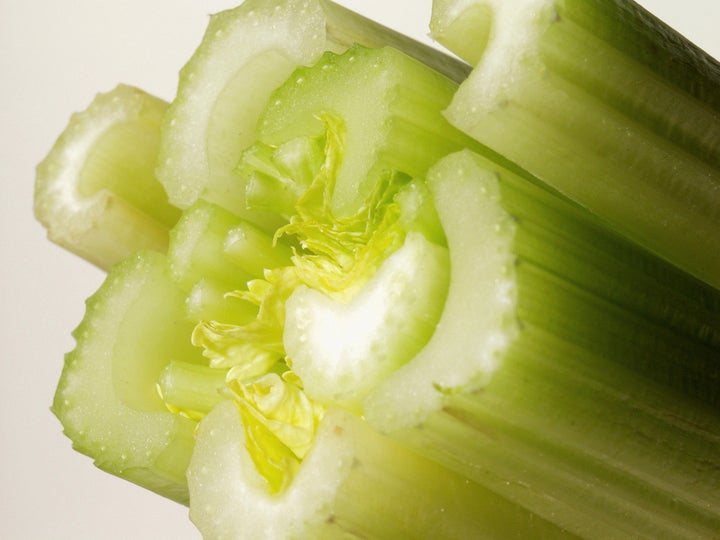
We all accept that as we age, our memories get worse. Turns out that eating the parsley garnish on your plate may help. A recent study looked at how a compound called luteolin, (commonly found in parsley and celery) slowed cognitive decline in older mice. What they found was that the mice that were given a diet fortified in luteolin had brains that functioned much like their younger counterparts.
What is luteolin?
Luteolin, similar to quercetin, is a flavonoid, which means it fights the aging process in all our cells, and is associated with lowered risk of developing cancer and heart disease. In the brain, flavonoids protect cells from the aging process by reducing inflammation. Research has also been conducted involving luteolin and other neurological diseases, including diabetic neuropathy and multiple sclerosis; however, more research is needed. Luteolin is found in most leaves, which means it’s abundant in many herbs including parsley, celery, perilla leaves, chamomile tea, rosemary, oregano as well as olive oil, carrots and peppermint.
It is worth mentioning, however, that the study was conducted on mice, different results may be found in humans. Luckily, the foods that luteolin are found in are good for you, so it can’t hurt to add some to your diet.
To ramp up the luteolin content of your diet try the following tips:
- Eat the parsley on the plate. Luteolin is found in both the dried and fresh varieties of most herbs. A garnish isn’t always just for show.
More from FYI Living:
Joint Pain? Foods Scientifically Proven to Reduce Pain
ORIGINAL RESEARCH
Brain Function Improved by Luteolin in Celery, Parsley, Chamomile Teahttp://fyiliving.com/research/brain-function-improved-by-luteolin/
Summary
Inflammation (and the toxic byproducts of the inflammation) of a certain group of brain cells called the microglia are associated with aging, reduced cognition and neuron degeneration. Adding luteolin, a flavonoid, to the diet has been found to effectively control the secretion of these biochemical triggers by the microglia. In turn, this improves brain function related to the area of the brain called the hippocampus, which is the center for memory and learning. Thus, this study attempts to estimate the beneficial effects of dietary luteolin on protection of the brain cells from deterioration and loss of function.
Introduction
Neuron degeneration begins prior to physical aging; and so signs of brain aging could appear even in medically fit middle-aged people. The portion of the world’s population that is over 60 years of age is growing rapidly. So also is the number of people at risk of neurodegenerative ailments like Alzheimer’s. Therefore, developing remedies to slow down brain aging has become essential. Experiments have proved that the concentration of specific compounds in the hippocampus lead to inflammation, resulting in deficient cognition. Flavonoids, being anti-inflammatory and antioxidant in nature, are an excellent choice for controlling inflammation induced by secretions of the microglia. Flavonoids protect the brain cells and improve learning and memory-related tasks linked to the hippocampus.
Methodology
- The effect of luteolin on microglial cell culture was studied under laboratory conditions using plasma extracts from mice.
Results/Key findings
- The secretion of biochemicals by the activated microglia was reduced up to 70 percent by adding luteolin to the diet. The effect of luteolin on the microglia caused a protective effect on the neurons.
Next steps/Shortcomings
The impact of dietary luteolin on hippocampus-related cognition needs further examination. The exact bioavailability and penetration of luteolin into the brain needs to be measured. Also, the possibility of luteolin acting on the periphery to influence immune system-to-brain signals should be studied. The hypothesis, that luteolin controls inflammation by reducing expression of certain cytokines (cellular biochemicals) and requires further proof.
Conclusion
In today’s world of medical advances, the geriatric population segment is increasing. A very significant concern is ensuring protection against brain aging. Celery, parsley, chamomile tea and some other vegetables and fruits are rich sources of luteolin, an important flavonoid, known to express properties of antioxidation, removal of damaging free radicals and anti-inflammation. Loss of memory and hippocampus-related functions were reversed in older mice fed with a luteolin-rich diet. From the present study, it is clear that inflammation in brain cells that affects cognition and induces neuro-degeneration can be controlled by consumption of luteolin-rich food. Thus, luteolin in one’s diet could be effective in both therapy and prevention of neurodegenerative diseases.
For More Information:
Luteolin Inhibits Microglia and Alters Hippocampal-Dependent Spatial Working Memory in Aged Mice
Publication Journal: The Journal of Nutrition, August 2010
By Saebyeol Jang; Ryan N. Dilger; University of Illinois, Urbana
*FYI Living Lab Reports Are Summaries of the Original Research.